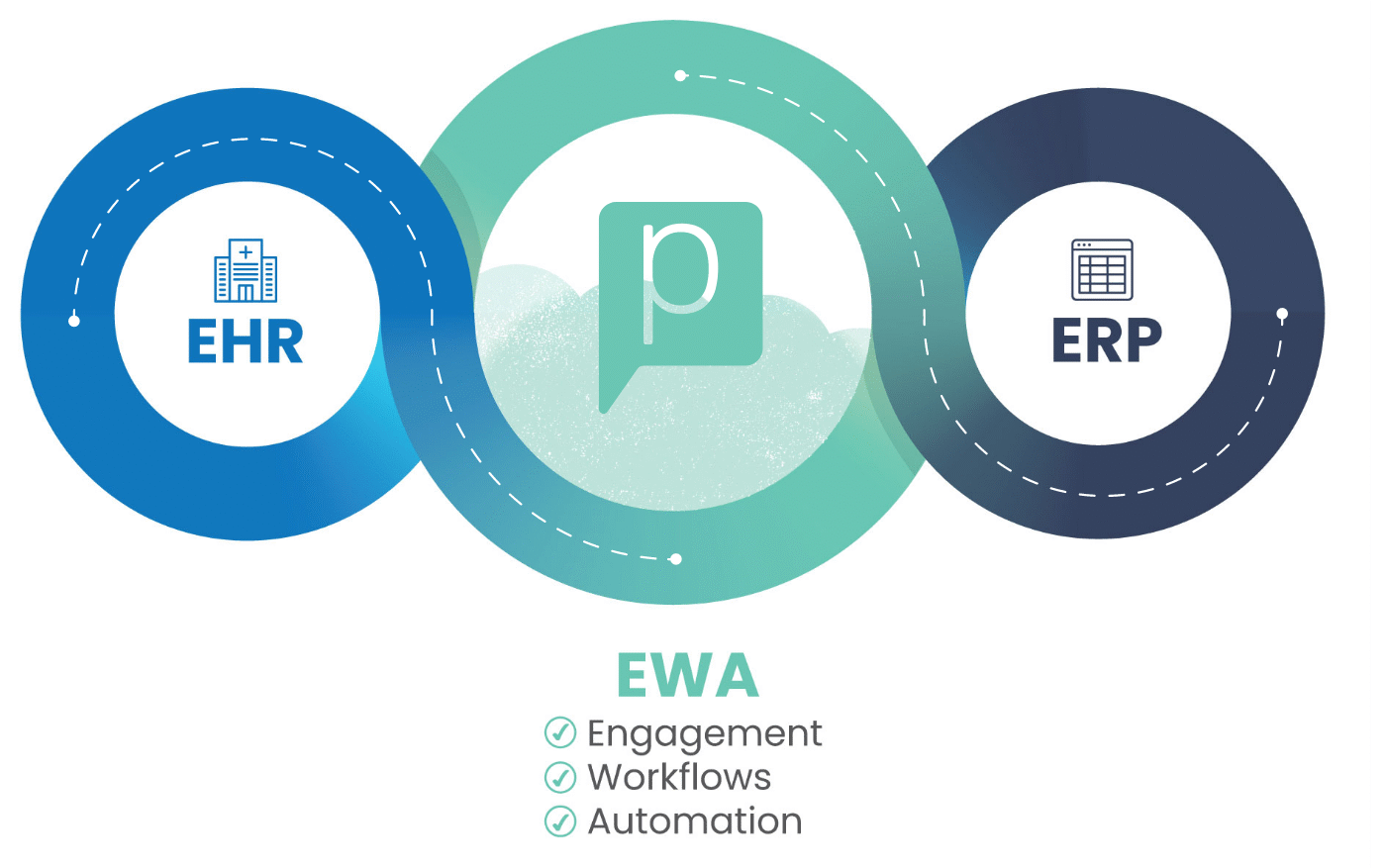The ideal healthcare ecosystem is one where the patient thrives and the hospital functions at peak efficiency. However, this is only sometimes a reality, as miscommunication, wasted resources, and missed opportunities plague operations.
Disparate systems often cause inefficiencies – hospitals cannot harness the power of their data because that data is not unified.
The solution lies in integration – not just of data but of engagement, workflows, and automation. Healthcare has long relied on data management; it is time to elevate process management.
Integrating a third foundational pillar could revolutionize process management. Imagine a platform focused on engagement, workflows, and automation (EWA) to unite disparate systems and siloed practices.
EHR and ERPs: The Foundation of Healthcare Operations
EHRs revolutionized healthcare by digitizing patient data and providing a centralized repository for medical histories, conditions, diagnostics, and treatment plans. This digitization was not trivial; it curated information in real-time, enabled quick access to data, and improved patient safety through better-informed care decisions.
On the other hand, ERP systems transformed the way healthcare institutions could manage day-to-day operations. From supply chain management to human resources, finance, and clinical utilization, ERPs broke down traditional data silos and created organized, structured, and more innovative ways of managing resources.
EHRs and ERPs help hospitals offer adequate care, improving patient outcomes and the bottom line.
Unlocking the Power of Integration
The power of EHRs and ERPs comes from the data they hold. But data alone isn’t enough—it’s about leveraging it, and this is where they fall short.
Leveraging data is where the EWA comes in as the third pillar.

EWAs unify data from disparate sources, streamline operations, and automate processes. Imagine a healthcare ecosystem where patient scheduling, billing, claims, lab analyses, and prescription fulfillment are in one platform. Unification is the power of the EWA – a unified system of engagement, workflows, and automation.
Personalizing the Patient Experience with CRM
At the core of the EWA is customer relationship management (CRM) – but not as you’ve known it. CRM systems were built to manage customer relationships in retail or service industries; however, a CRM within an EWA makes patient care genuinely personal.
It leverages EHR data to personalize every touchpoint – with the right message at the right time.
Patients are no longer just names on a screen but individuals with unique needs. An EWA is an engagement engine that leverages segmented data to ensure that every point of engagement with the patient—from appointment reminders to educational materials—is tailored.
Streamlining the Healthcare Workflow
The essence of healthcare is in its process—the steps and decisions that lead to health outcomes. However, these processes have historically been bogged down by manual processes.
By contrast, an EWA creates routines that eliminate manual tasks, enabling healthcare staff to focus on providing personalized patient care and improving overall operational efficiency.
An EWA introduces a level of organization and efficiency that ensures the right thing is done at the right time and that nothing is overlooked or forgotten—especially when the stakes are a patient’s well-being.
The Automation Advantage
Automation is not about replacing people with machines; it is about recognizing that automation performs some tasks better.
Consider prior authorization—a crucial but time-consuming and error-prone task. An EWA can automate this process, removing the need for manual back-and-forth with insurance companies and freeing up providers to focus on direct patient care.
Similarly, appointment scheduling, inventory management, and revenue cycle operations can be upgraded with automation that not only removes the tedium of clerical work but also reduces errors and improves outcomes.
The Path Forward
In the coming years, EWA systems will differentiate leaders from followers in the healthcare industry. Healthcare providers must start the conversation about EWA now. We must invest in the technology but also in the training, the mindset, and the cultural shift it requires. In closing, the EWA system is a missing link that will transform healthcare, bringing personalization, efficiency, and accuracy.

